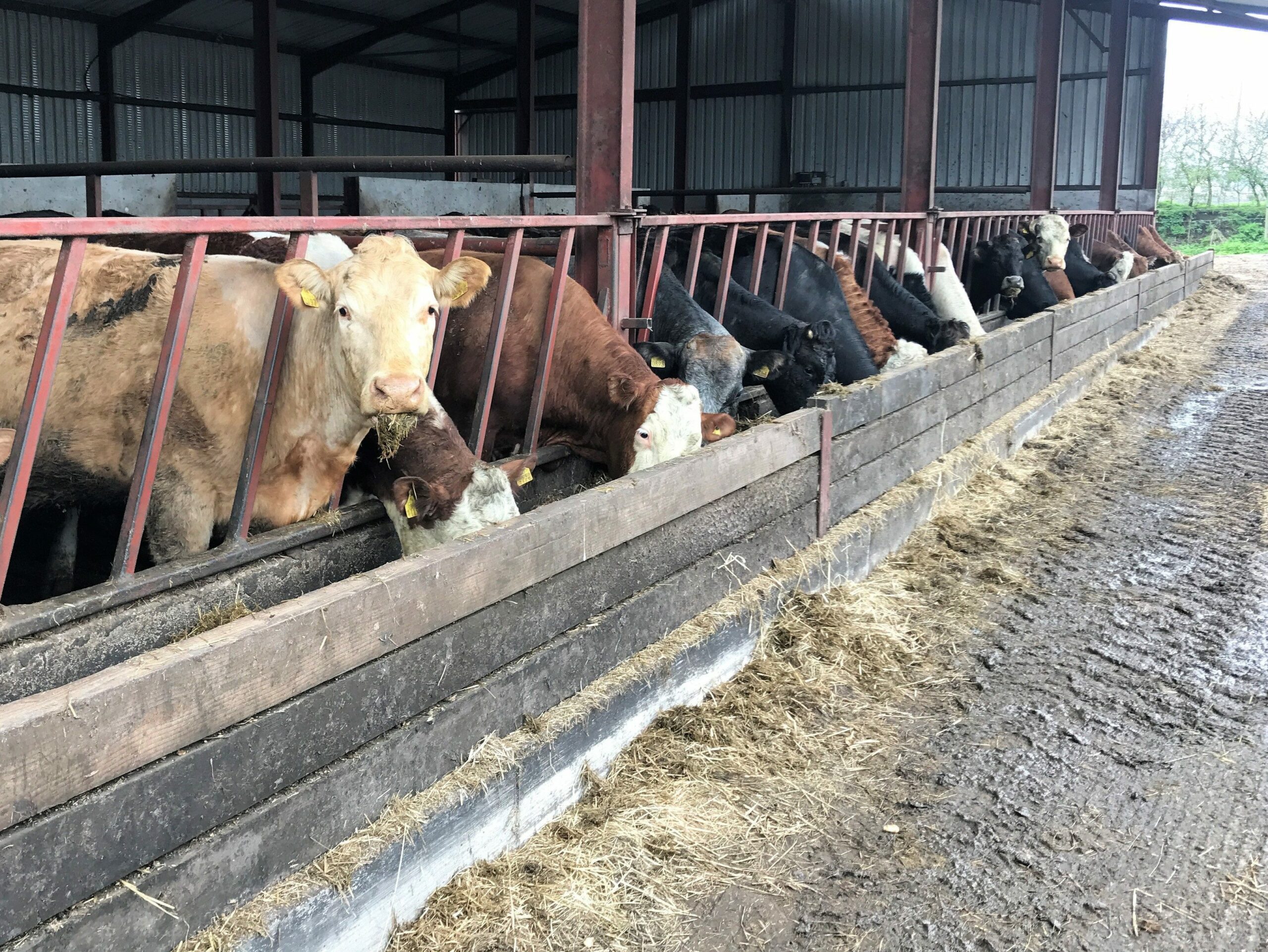The feed requirement of a suckler cow varies at different times throughout the year and is determined by the stage of production she is at.
Naturally, heifers and thin cows have different feed requirements than mature, better-conditioned cows.
By now, calving has either commenced or is on the horizon on suckler farms and farmers should concentrate on feeding their cows correctly to ensure there are no issues when it comes to milk production and indeed breeding.
Speaking at a recent event in Castlebar, Co. Mayo, University College Dublin’s (UCD’s) Dr. Alan Kelly outlined the nutrition requirements of suckler cows and heifers post calving.
He highlighted that the energy supplied by moderate-quality silage (64% dry matter digestibility DMD) – to suckler cows producing 5-8L of milk – falls short by between 1.3UFL and 2.6UFL/day.
He also highlighted that cows eating high-quality silage (72% DMD) and producing 5L of milk have adequate energy and a cow producing 8L has an energy deficit of 1.3UFL/day.
However, Dr. Kelly explained that if cows that are being fed moderate-quality silage are turned out within 4-6 weeks, the cows will correct this deficit and there will be no negative impact in terms of reproduction.
However, he said: “If we cannot get that cow to grass in the 4-6 weeks, we have to correct this as it could lead to fertility problems.
“Moderate-quality silage is sufficient for a time. And, after 4-6 weeks, if we can get the cow out to grass, she will be on a positive energy balance and she will have no issue in terms of reproduction,” he added.
Early-calving cows
However, early-calving or January-calving cows’ diets are not as straight forward. These cows need to be supplemented with both silage and concentrates.
He said: “January-calving cows will come in heat indoors and these need to be fed to their requirements. We’re talking moderate-quality silage and 1-2kg of concentrates to meet these requirements.
“On farms where only poor-quality silage is available, an additional 1-2kg of concentrates will make up that deficit,” Dr. Kelly added.
Discussing the nutritional requirements of heifers and thin cows, he said: “Regardless, first calvers and thin cows need to be supplemented right until turnout – they are the priority group and they cannot be subjected to any low level of feeding; inadequate intake has implications in terms of fertility.”
Preferential feeding treatment should always be given heifers and thin cows in a low body condition score (BCS = 2 or less).
The diet should include ad-lib moderate to high-quality silage with concentrates supplemented at a rate of 1.5-2.5kg/day (depending on silage quality).
Minerals
Dr. Kelly also touched on the importance of minerals pre and post calving. He said: “The requirement of minerals for a suckler cow is a lot lower that those of a dairy cow.
“Grass and silage are more than adequate in the major minerals – calcium (Ca), phosphorus (P) and Magnesium (Mg). However, they are deficient in some of the trace elements – copper (Cu), selenium (Se) and iodine (I).
“Pre-calver mineral supplementation is very important. We need to be supplementing six weeks before calving and I would argue that you should keep that supplementation going for six weeks until you get the cow out to grass.”
He highlighted that post-calving minerals should be supplemented at a rate of 150g/day along with silage.


